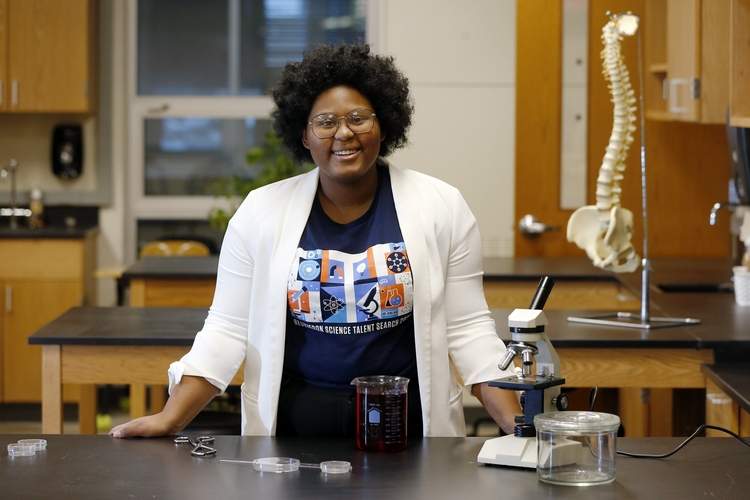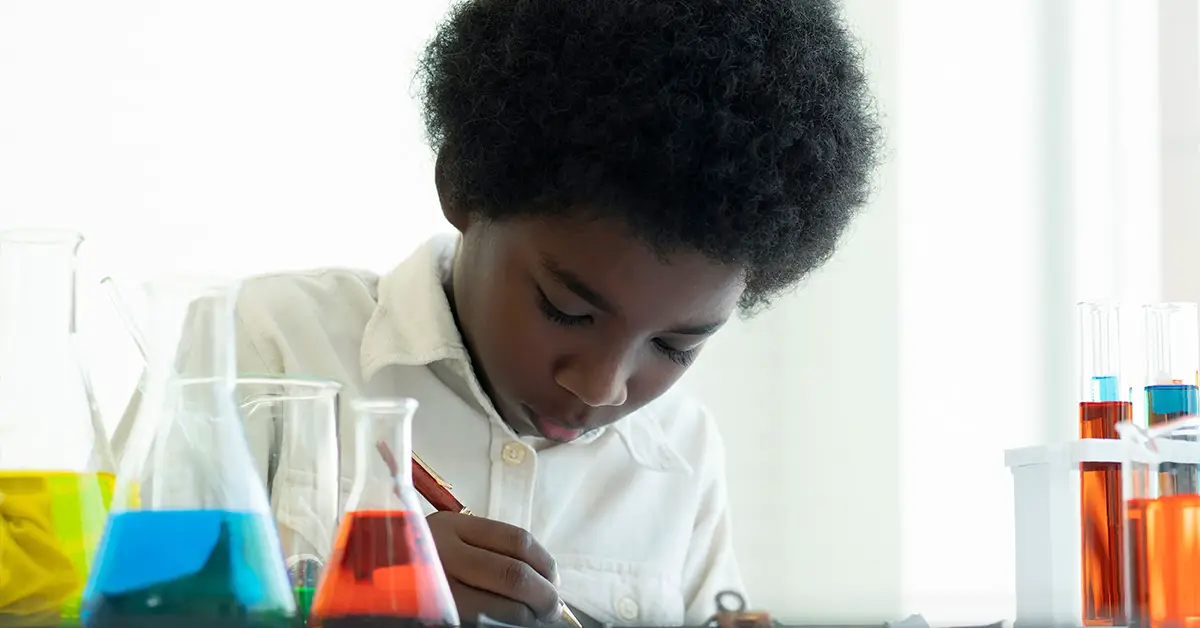Seventeen-year-old Dasia Taylor aspires to a career in medicine. But then she changed the future when it comes to stitches by inventing sutures that change color when it contacts an infection. She started the project using beets as a natural dye for the thread. Taylor won awards at several regional science fairs for her invention, including the Seaborg Award.
Teenager Invents Sutures That Change Color
Taylor got the idea for sutures that change color after reading about new sutures that sense infection digitally and report them on smartphones and computers. These “smart” sutures are great progress, but they are expensive and not feasible in developing countries that often lack internet and other required technology. However, 11% of wounds from surgeries get infected in low- and middle-income countries. [1] The health professionals there still need a way to know when these occur. Additionally, the teenager became particularly interested in infections that manifest after C-sections. In some nations in Africa, up to 20% of women who give birth that way get infections. [2]

“I’ve done a lot of racial equity work in my community, I’ve been a guest speaker at several conferences,” said Taylor. “So when I was presented with this opportunity to do research, I couldn’t help but go at it with an equity lens.”
She describes her research as “where equity meets science” since she’s taking the idea of “smart” sutures and making them affordable for those who need them. Previously, Taylor was involved in the Black History Game Show and attended school board and district meetings to advocate for an anti-racist curriculum. But in the four months before the regional science fair in February 2020, she spent every Friday afternoon with her chemistry teacher, Carolyn Walling, to research. Walling was looking for students to conduct experiments for science fairs, and Taylor quickly volunteered.
Read: Girl Donates All Her Birthday Money to Homeless Man Who Returned Her Grandma’s Wallet
Creating Color-Changing Sutures
During her research, Taylor learned that human skin is naturally acidic, but an infected wound raises its pH levels. Her breakthrough came with the knowledge that many types of produce also change colors from different pH levels.
“I found that beets changed color at the perfect pH point,” says Taylor. Bright red beet juice will turn dark purple from the heightened pH levels from infection. “That’s perfect for an infected wound. And so, I was like, ‘Oh, okay. So beets is where it’s at.’” [3]

Her next challenge was a thread that will hold the dye and not wash out. So she tested multiple materials. At this point, her education was at home due to the pandemic. She often spent four or five hours at a time, experimenting. Soon she discovered the perfect thread in cotton polyester. After contacting a higher pH level for five minutes, it turned from bright red to purple. After three days of exposure, the thread turned gray. This could alert patients to infections and have them seek medical help before the issue worsens.
“The beet stitches will be able to identify the pH changes in the tissue and the blood, which triggers them to change color. That’s how the entire process works,” she said. “It’s not complicated or anything like that. There aren’t any fancy technologies. It’s really just the basic principle of science.”
Taylor plans to patent her color-changing sutures, hopefully, to reach people in poorer countries.
“I’ve always had a passion for helping people,” she said. “I will be doing my research for as long as it takes to ensure that these stitches get to the people who need them.”
Inspiring Others
“I think it is amazing that this young high school scientist was inspired to work on a solution to address this problem,” said Kathryn Chu, the director of the Center for Global Surgery at Stellenbosch University in South Africa. “A product that could detect early [surgical site infections] would be extremely valuable.” However, “how this concept could translate from the bench to the bedside needs further testing.” This is partly because “if the infection oozes through the skin, or involves the skin, the infection has already reached later stages.” [4]
Despite all of the praise and acclaim for her invention, the teenager’s focus is on others. “Equity work has my heart, and that’s what I want to do for my career. I do plan on continuing my research, and ensuring that this project is released and people actually get this discovery, and it will save lives.”
Even though the thread isn’t patented yet, Taylor’s work is still affecting others. One elementary school teacher in Massachusetts had their students learn about Taylor’s accomplishments and write about why she inspired them. Taylor cried when received the document with all of the student’s thoughts.
“I consider changing the world inspiring the next person, like if I get to inspire someone to go do something great, that’s what success is in my mind.” [5]
Keep Reading: All-girl engineer team invents solar-powered tent for the homeless
Sources
- “Global guidelines on the prevention of surgical site infection.” World Health Organization. November 2016
- “This High Schooler Invented Color-Changing Sutures to Detect Infection.” Smithsonian Magazine. Theresa Machemer. March 25, 2021
- “Meet the teen who invented color-changing stitches to prevent fatal infections.” Today. Meghan Holohan. April 2, 2021
- “Teenager Invents Color-Changing Sutures to Detect Infection.” Yahoo. Matthew Hart. March 29, 2021
- “A student harnessed the power of beets to make healing from surgery safer — and more equitable.” CNN. Anjail Huynh and Michelle Krupa. April 17, 2021

